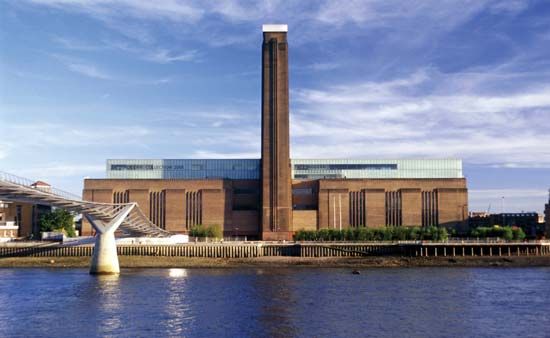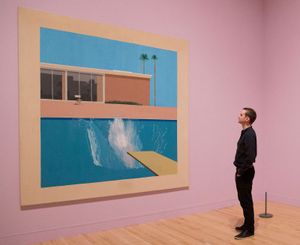Tate Modern
- Areas Of Involvement:
- modern art
What is Tate Modern?
Where is Tate Modern located in London?
What notable artworks are housed at Tate Modern?
Tate Modern, museum in London that houses a collection of modern and contemporary art from around the world. It is located close to Bankside Pier near Southwark. The museum has a curatorial system in which the art is exhibited by theme rather than by time period or original location.
History
Tate Modern, which opened in 2000, is the newest of the Tate group of museums, which also comprises Tate Britain in London, Tate Liverpool, and Tate St. Ives in Cornwall. The modern art museum was founded in December 1992, when the Tate trustees announced plans to create a gallery in London for international modern and contemporary art. In 1994 they chose the abandoned Bankside Power Station as the site for the new museum. The board picked Swiss architecture firm Herzog & de Meuron to remodel the power station, which was designed by Sir Giles Gilbert Scott (and originally opened in 1962), into a space for galleries, social events, and education. The architects incorporated much of the station’s original architecture and character into their design, leaving it as intact as possible. Hence, Herzog & de Meuron turned the Turbine Hall into a grand entrance and the boiler rooms into galleries. In 2009 Herzog & de Meuron returned to renovate the museum, using the power station’s very large and redundant oil tanks to expand exhibition space and increase visitor facilities.
Collection
Although Tate Modern contains art from a variety of cultures, the Tate museums collectively hold the United Kingdom’s official collection of national art. The original collection and the building were donated by sugar merchant Henry Tate, who gifted the museum 65 pieces from his personal collection; the original Tate Gallery opened in 1897. Tate Modern, specifically, holds both an international and national collection dating from 1900 onward. Tate Modern exhibits a wide variety of artwork, from painting, drawing, metalwork, sculpture, robotics, and prints to photography, video and film, installations, and performance art. Among its celebrated pieces are a replica of Marcel Duchamp’s groundbreaking Fountain (1917), Paula Rego’s War (2003), and David Hockney’s A Bigger Splash (1967). Tate Modern categorizes British art as art that has contributed to the artistic history and development of the United Kingdom, irrespective of the artist’s nationality. Tate Modern’s exhibitions are ever changing, as it borrows works from other museums to display and lends art from its collection frequently.
























